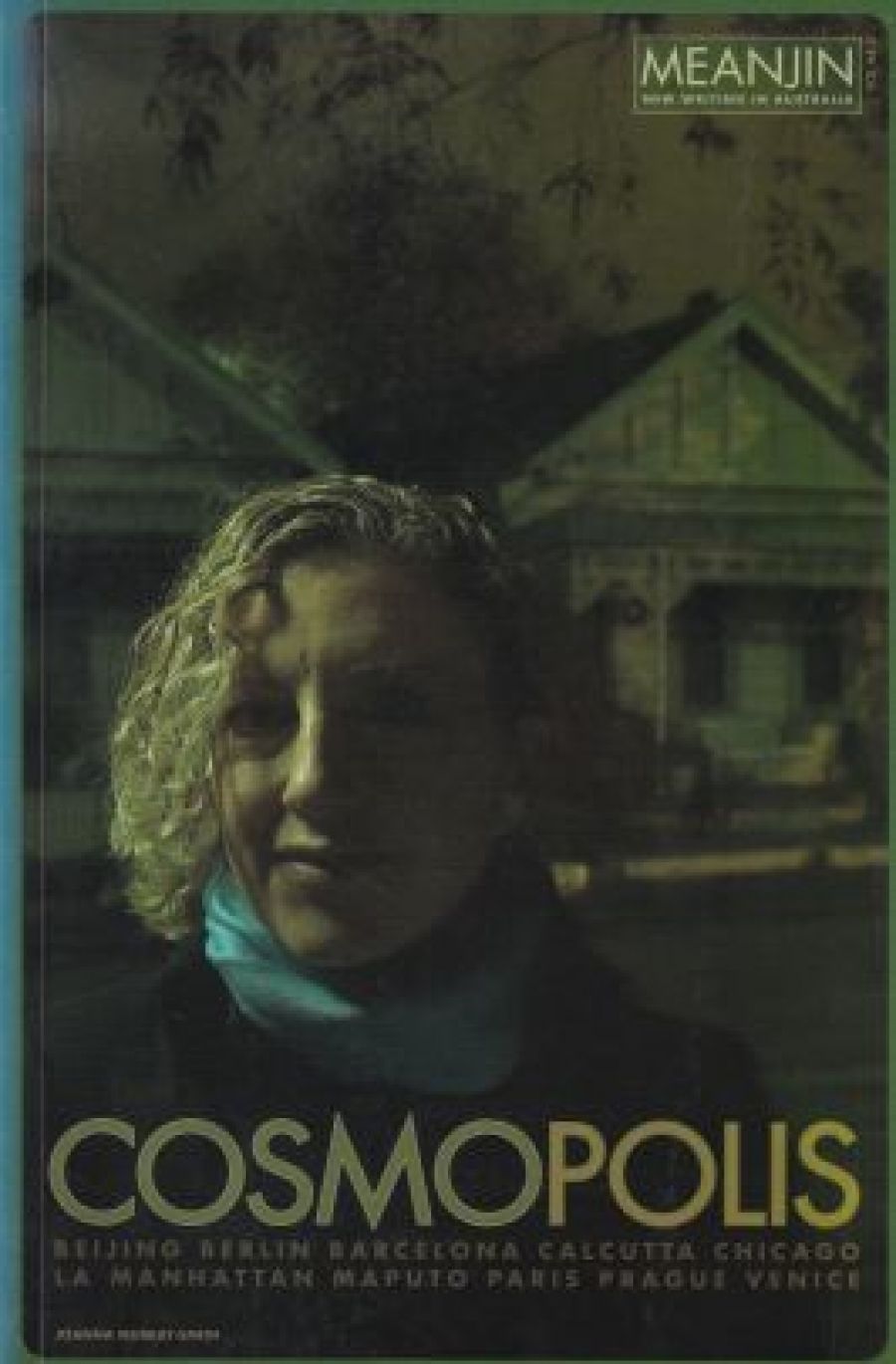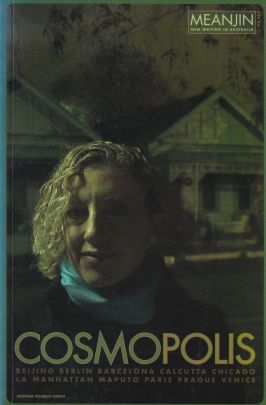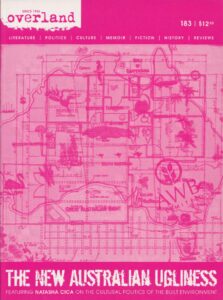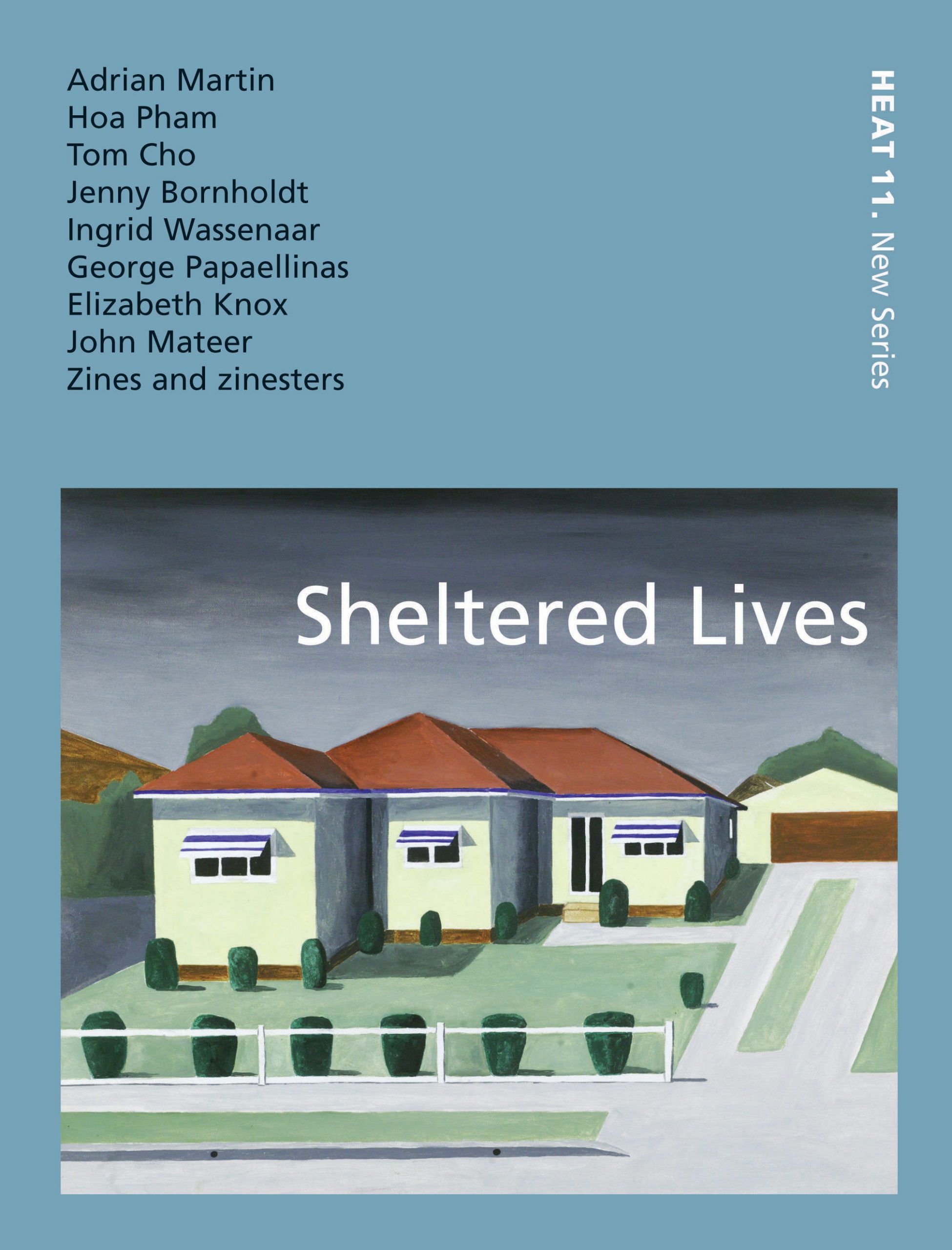
- Free Article: No
- Contents Category: Journals
- Custom Article Title: The jostle of selfhoods
- Review Article: Yes
- Article Title: The jostle of selfhoods
- Online Only: No
- Custom Highlight Text:
The idea that literary journals gain something by being yoked to a single theme seems to me one of the mildly dubious aspects of the enterprise. I suspect the tendency grows from a fear of disorder – ‘the anarchy of randomness’, as Adam Phillips puts it. But if these organs do require some unifying concept, it should ideally be a determination on the part of their contributors not to be herded into acquiescence with any one position. The true pleasure to be had from their pages is the jostle of selfhoods, the dust and din of competing subjectivities, rather than a communal reinforcement of, or opposition to, the status quo. As with any muster, it is the breakaways that provide the best exercise.
- Book 1 Title: Meanjin
- Book 1 Subtitle: Vol. 65, No. 2, On Cities
- Book 1 Biblio: $22.95 pb, 250 pp
- Book 1 Cover Small (400 x 600):

- Book 1 Cover (800 x 1200):

- Book 2 Title: Overland 183
- Book 2 Subtitle: The New Australian Ugliness
- Book 2 Biblio: $12.50 pb, 96 pp
- Book 2 Cover Small (400 x 600):

- Book 2 Cover (800 x 1200):

- Book 3 Title: Heat 11
- Book 3 Subtitle: Sheltered Lives
- Book 3 Biblio: $24.95 pb, 240 pp
- Book 3 Cover Small (400 x 600):

- Book 3 Cover (800 x 1200):

This thematic coherence is strongest in Meanjin, which explores city life from the venerable European polis to our own shores, via North America, Asia, the Middle East, Africa and India (there is even the obligatory Melbourne–Sydney essay, a masterful piss-take by Craig Sherborne). Placed together, the pieces form a global mosaic both vivid and complex. I finished it feeling jet-lagged, certain that the claim made by English writer Tim Mackintosh-Smith in his Travels with a Tangerine (2001) – that Australians, avid for the world beyond their own local emptiness, are the late-modern travellers par excellence – had been confirmed.
In spite of globalisation’s tendency (as Graeme Davison puts it in his suasive essay on Sydney’s urban past) to turn cities into sites of ‘hybridity, cosmopolitanism, pastiche’, a common thread here is the stubborn survival of national or local distinctiveness. Helen Ferber, visiting Munich both before and after the war, sees a place that has shrugged off the bitter history of the twentieth century – a German city still ‘infused somehow with a Mediterranean warmth’ – while Damien Kinney, revisiting the burgeoning megalopolis of Beijing, registers an ambivalent admiration for a place so rich in history that its inhabitants can afford to obliterate its physical manifestations.
Enduring, also, are ideas about cities which bypass their reality. Venice’s feminine charm is built on a very masculine history of militarism and trading nous, admits Michelle Lovric; and the antipodean reverence for Paris, as Caroline Brothers explains in a review of several books touching on the city, often serves to obscure darker aspects of its history. Nicola Walker’s brief essay on Maputo – capital of Mozambique, about which she is researching a book – also sketches the ways in which even high-minded interventions can cause harm by viewing Third-World places through the prism of First-World ideology. The soft imperialism of NGOs has made matters even worse in Maputo’s case.
And as always, there is fine poetry. Clive James’s paean to a Jack Yeats painting is a triumphant work of self-negation (a poem that so convincingly argues the virtues of painting over poetry that it disproves its own claims).
Overland is spikier, more focused on the politics of the built environment. Taking its cue from Robin Boyd’s 1960 jeremiad, ‘The New Australian Ugliness’, the issue begins with Natasha Cica’s ‘The Incorruptibles: Where Are They Today?’, a celebration of the life and work of Harry Seidler, whose imported European modernism, with its noble, collectivist impulses, is set against the ocker brutalism of the McMansions that have sprung up on the outskirts of our cities.
As the essay develops, Cica goes beyond a merely aesthetic critique of these Colourbond ghettos. Borrowing from Boyd, Seidler, Glenn Murcutt and Tasmanian environmental activist Olegas Truchanus, she argues that their physical ugliness is analogous to a political ugliness – that their squat, un-neighbourly bulk, their newness, their brash, un-ecological selfishness, is of a piece with the economic and social policies of the Howard government.
Cica’s anger is legitimate and her motives are virtuous; she is right, too, to be disgusted with the crudity and wastefulness of the new Australian anti-architecture. But engaging with the aesthetic content of democracy can be problematic. She posits, via Seidler, the modernist, inter-nationalist dream of an architecture that respects the human need to dwell (Heidegger’s rather mystical distinction between mere building – techne – and dwelling, is implicit in much postwar architectural thinking), and with him sees European efforts to body forth such ‘true’ dwellings as evidence of more educated, more politically and aesthetically conscious communities. She quotes Seidler: ‘Most European cities have undergone a process of “re-invention” … where people demand decent living conditions, some of which are the best in the world.’
To which I can only respond: Milton Keynes. ‘Some of which’ ignores the worst of the continent’s modernist architectural project – the centralised imposition of a soul-sinking ugliness on the built environment, which, at its most extreme, suggests tyranny sublimated in stone (see W.G. Sebald’s description, in Austerlitz [2001], of the new Grande Bibliothèque in Paris).
The idea of freedom has been so traduced during the era of George W. Bush that it is tempting to blame the concept rather than its mouthpiece. Yes, undoubtedly, McMansions are evidence of an ugliness almost metaphysical in character – the buildings are a visible trace of deep flaws in our politics and our wider society. But vulgarity is a freedom, too. Reading Cica’s essay I thought of literary critic James Wood, who recalled an argument between George Steiner and the exiled Russian poet Joseph Brodsky on a British television programme many years ago. Steiner apparently spent minutes bemoaning the aesthetic wasteland America, contrasting its cultural shortcomings with the magnificent works of art created under conditions of repression in Europe and Russia. ‘Yes,’ replied Brodsky, ‘but liberty is the greatest masterpiece.’
This is not a criticism of Cica’s wider argument. Hers is a call for openness and education – for an architecture capable of reflecting our better natures. In this, she is eloquent and persuasive. Yet I could not shake off the feeling, reading Overland, of a programmatic disdain for pretty much everything that has occurred in Australia since Howard’s ascendance. Katherine Wilson writes about anti-activist seminars, an insidious American import aimed at arming corporate interests against legitimate public grievance; Mark Dober examines the aesthetic appropriation of Australia’s landscape for the greater glory of the tourism dollar; and Raewyn Connell excoriates the neo-liberal project (which ticks every box: formulated in the United States, implemented by politicians here on behalf of big business) in its entirety. Even Ian Syson’s lively review of new fiction contains digs at multinational publishers. The reader grows weary, even in agreement.
I preferred the approach taken by Patrick Wolfe in his marvellously intemperate demolition of Mark Connor’s The Invention of Terra Nullius (2005): ‘Connor’s bizarre belief that a semantic critique of terra nullius can somehow dispel the reality that the term has been used to summarise is akin to a drunkard’s belief that smashing the pub clock will stave off closing time.’ Acknowledging the sloppiness of some historians in backdating the legal concept’s arrival serves to enhance, rather than diminish, Wolfe’s rhetorical authority when attacking Connor’s larger claims. It is stirring stuff, and it made me wonder whether the specious rhetoric of the right wouldn’t have such a stranglehold over our national conversation if the left wasn’t quite so primly correct in critique.
HEAT is an eclectic assemblage in comparison, and the most aesthetically pleasing of the three journals. Particularly striking is its visual essay, which showcases the fibro sublime of painter Noel McKenna. His architectural paintings have a nostalgic sheen and humour (one house looks to have been painted from the interior of a garden bird-box) that is a world away from McMansionland.
Sharp and recondite, John Mateer’s essay on Tom Nicholson’s Banner Marching Project also addresses alternative methods for drawing attention to place. What began in 2002 as a pseudo-political protest involving vast banners calling for, well, nothing at all (they were printed with generic faces) through the former border-strip between East and West Berlin, has grown into an ambitious national ‘action’, undertaken at various points across the country, and intended as ‘an enquiry after the nature of the absence that is the empty country, the no-man’s-land of Australia’.
Equally eloquent, if more immediately accessible, Jenny Bornholdt’s ‘The Rocky Shore’ is the standout poem of the number: an ostensible hymn to the narrator’s backyard shed which swells in all directions to meditate on gender, childhood, vocation and identity, friendship, death and grief – as well as containing instructions for a Hindu kiln blessing and tips for treating sick hedgehogs:
Hedgehogs?
Well you might ask. The SPCA asks will we be ok to administer medicine should they need it? Medicine? What kind of medicine?
Well, they get mange sometimes. Oh. And what sort of medication might they need for that? Well, it’s sheep dip. But you only give thema tiny bit.
The effect is one of bitter-sweet levity. As Irwin Edwin said of Dorothy Parker, Bornholdt is a Sappho who can ‘combine a heartbreak with a wisecrack’.
A transplanted American, novelist Emily Ballou, uses an old black-and-white photograph of Monticello, Thomas Jefferson’s grand Southern home, as the unlikely springboard for a modest proposal on the necessity for treason. Like George Orwell, the deployment of such a charged term indicates moral rigour and clear-eyed love, rather than evil intent:
The writer’s job, the artist’s job is not just to write or paint or sculpt what you know best, as the saying goes, but to be a traitor to what you know best: to be a traitor to your country, to your own culture, perhaps even to your own sex. This means getting under the skin of things, pulling them apart, learning to see what you thought you already knew, differently.
I must admit to an immoderate affection for HEAT as a physical object, with its tidy Garamond font and its generous margins. Even the paper-stock seems part of a full-spectrum commitment to the writing contained within. As with architecture and politics, an exclusive concentration on what is merely utile leads to an ugliness which is not just aesthetic.


Comments powered by CComment